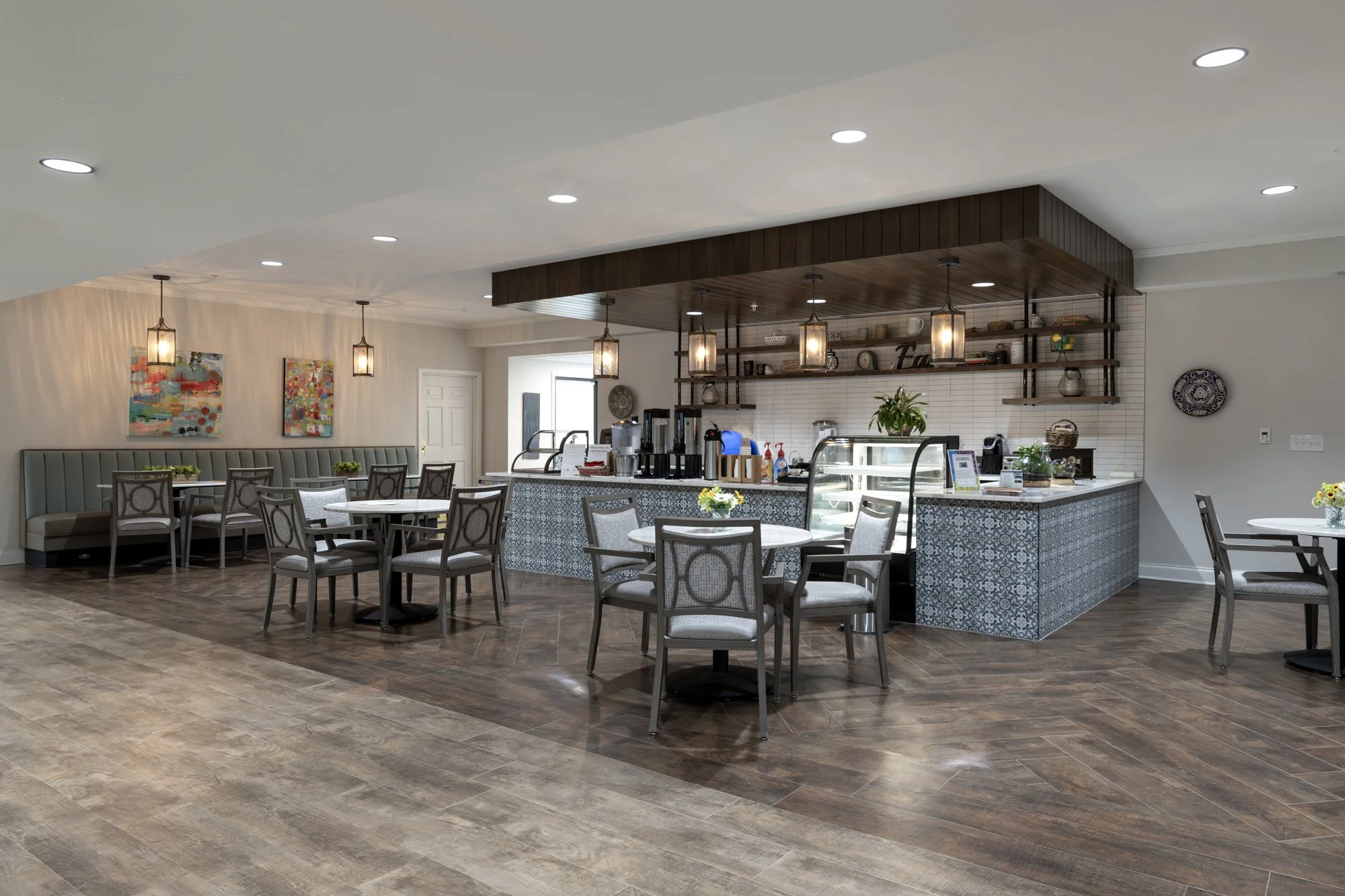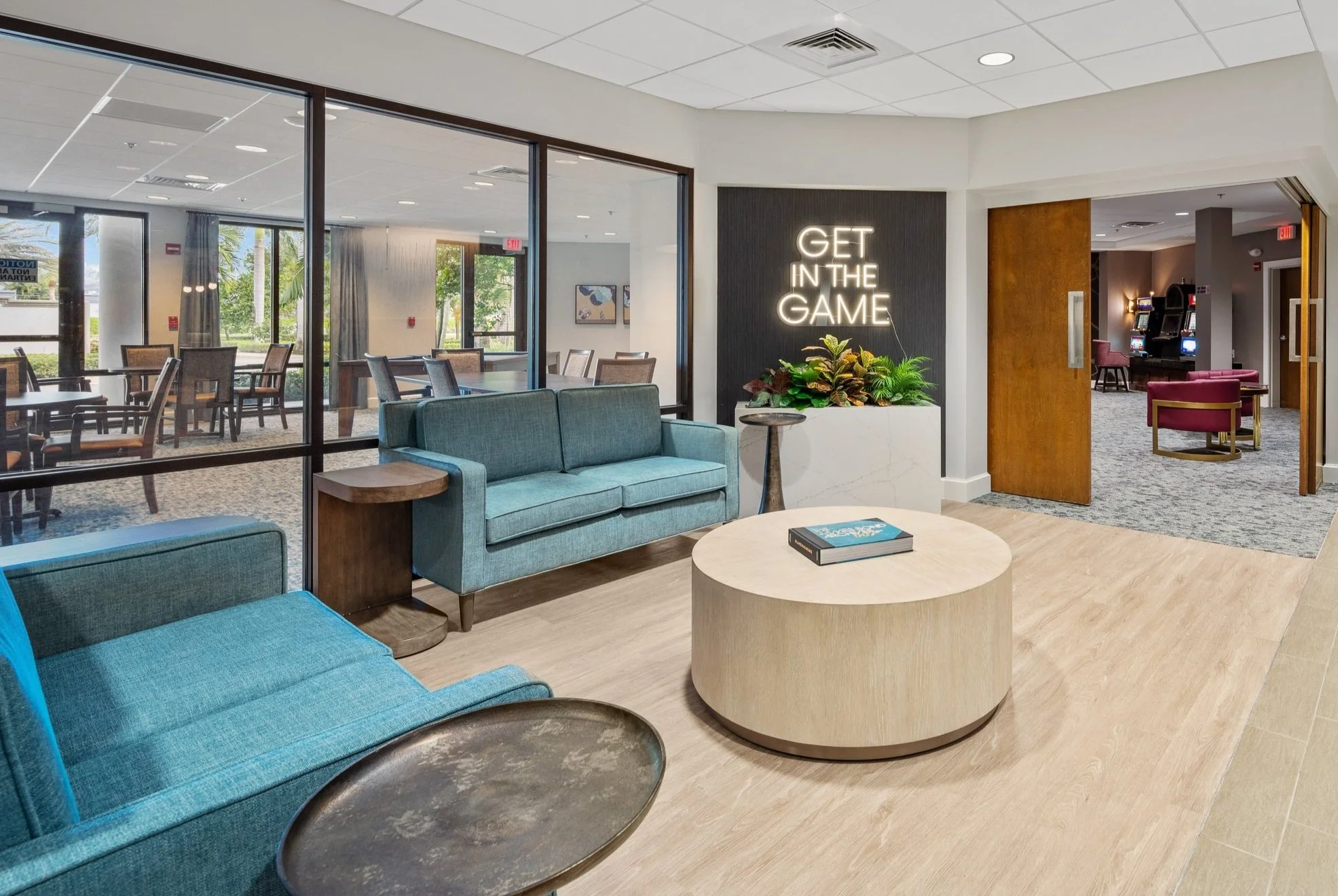Master Planning: Planning and Resilience Without the Crystal Ball
Master Planning: Planning and Resilience Without the Crystal Ball
Designing a vibrant and in-demand senior living community is easy when there are no limits. In the real world, financial, operational, and scheduling constraints are a given. That’s where master planning becomes essential. It helps prioritize what’s possible now while laying the groundwork for future growth, innovation, and community needs. It enables you to determine what you can do now and helps create a timeline to realize additional plans, desires, and visions of the community. An effective master plan is a true team endeavor. A strong master plan isn’t created in a vacuum—it’s a collaborative effort. Success depends on the input of all stakeholders, from owners, operators, and financial leaders to marketing teams, current residents, and prospective residents.
Focus Groups for 20/20 Vision
One way to gain insight into what residents and prospective residents want is to hold focus groups. This should include a sample of people who represent your target audience. Realize that while designing for the present and the future, it’s hard to tell what the market will be like in 10 or 20 years. So, in some ways, you are designing placeholders for the future. For example, pickleball wasn’t on anyone’s senior living bingo card 15 years ago. As it gained popularity, facilities didn’t have pickleball courts, but they did have tennis courts that could be converted to accommodate pickleball. It’s important to have designs that are flexible and enable renovations, changes, and additions as trends emerge and the needs and interests of residents change over time.
Take another example. Twenty years ago, pools in senior living communities were considered a “high-risk” amenity, and they came with more significant insurance costs; yet, over time, pools became a staple of communities. However, many communities found that people weren’t swimming and diving. Talking to residents and prospects, we discovered that people more commonly wanted pool areas to lounge, socialize, and enjoy the sun and fresh air. So outdoor spaces may focus less on the pools and more on the spaces around them – outdoor kitchens, lounge or patio areas, barbeque and picnic amenities, etc. It is valuable to have flexible spaces that can be updated, repurposed, or expanded to meet changing demands and expectations.
Focus groups and conversations aren’t just illuminating for community administrators and other leaders; they can be eye-opening for residents and prospects as well. For instance, seniors might suggest they’d like to have a ‘lazy river,’ which is impractical and cost-prohibitive for the community. However, instead of saying ‘no’ or dismissing the idea, you can take the opportunity to explain the costs involved and what they would have to sacrifice for this amenity (e.g., additional monthly or assessment fees and/or loss of outdoor space for dining and entertaining. When you approach ideas this way, residents feel listened to and engaged and are more likely to agree to compromises or alternatives.
Thinking Out of the Box
There’s a saying: “When life hands you lemons, make lemonade.” In senior living, you could say, “When spaces are outdated, fill them with fresh visions.” Read more about disruptions at the (Link Here).
For example, let’s say you have a golf course. It takes up a lot of space, upkeep costs are significant, and your residents hardly use it. Consider what you can do to transform this space into something residents and prospects want. If there is a demand for cottages or smaller neighborhoods, use the space for a small-house village on the greens with a reduced nine-hole pitch and put a golf course or greens. You will be generating revenue while appealing to a new market.
Another option is using the golf course space for a new or evolving trend, such as equestrian activities. You can take all or part of the golf course and create riding trails and possibly even a stable. There are wonderful examples of communities partnering with equestrian rescue operations to bring rescue horses to the community, where residents can ride and care for them. Residents can even be part of equestrian therapy programs and work with children or disabled individuals, which can be hugely powerful and provide a sense of purpose to the residents.
Sometimes, you have the right amenities but need to update the look and feel of your buildings. Fortunately, this often can be done without breaking the bank. This can involve revamping and beautifying the front of the building and entryways, improving and enhancing landscaping, and updating interiors with fresh paint, flooring, and/or artwork and decorative elements. Elsewhere, when a community has used various architects and designers over the years, the look and aesthetics can be inconsistent and disjointed. This can be addressed by developing a common architectural theme that ties everything together. It’s worth noting that when residents start to see positive changes and results, they may be more amenable to investing in additional changes or innovations. As a result, a small master planning project can evolve into something that has a greater impact.
Ultimately, master planning enables your organization to plan while realizing you can’t predict everything. However, you can look at design with the ability to make changes and adapt quickly to trends and new developments. As a result, you can keep your buildings filled and maintain resident engagement and satisfaction.
Pi Architects has assisted many organizations through the master planning process. Partner with Pi Architects to help your senior living community stay flexible, adaptive, and vibrant – ready to meet resident needs today and tomorrow.
Pi Architects | Contact us here or call us at 512-231-1910.







